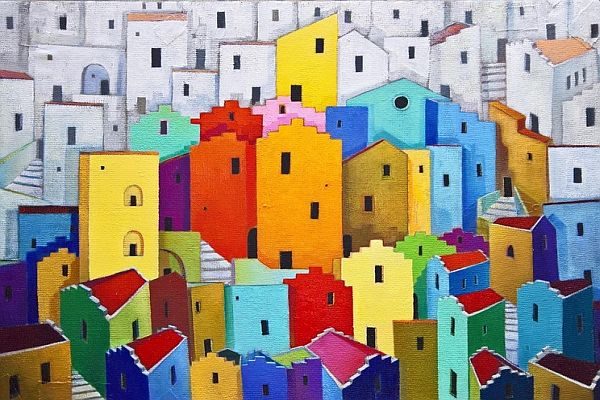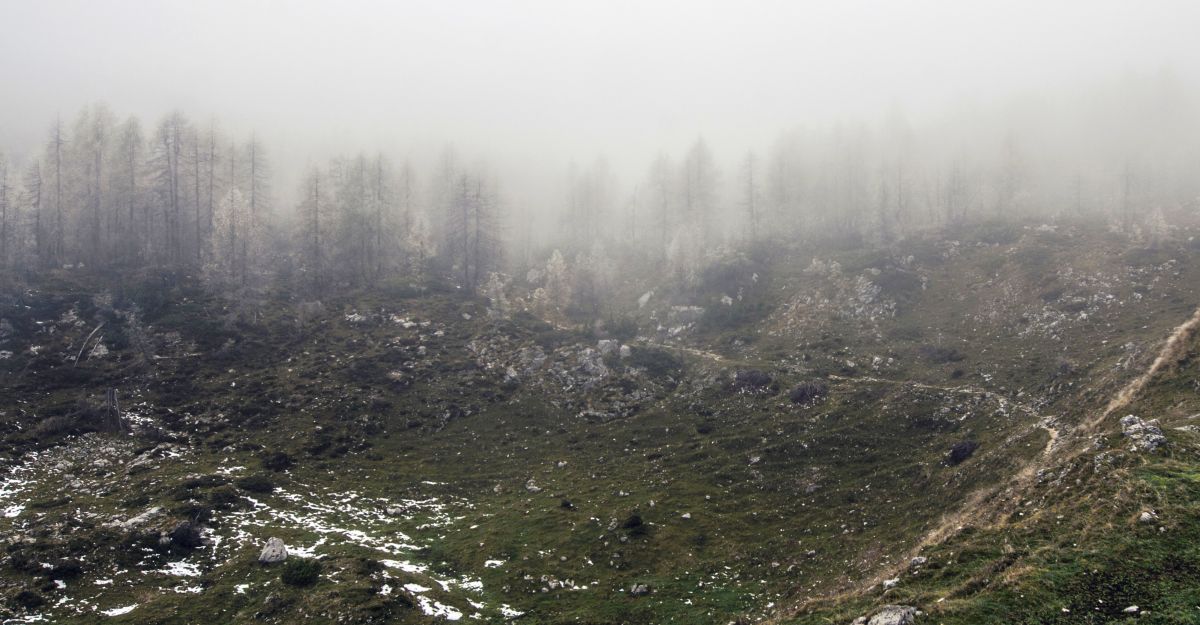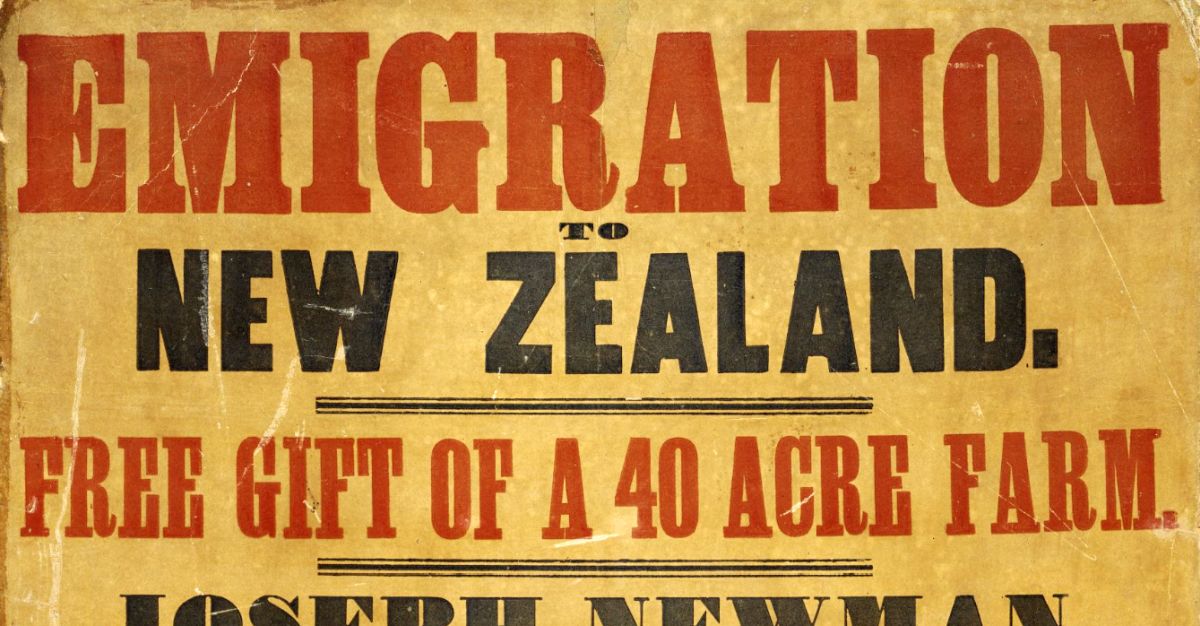The American fiction writer Ursula K Le Guin’s allegorical short story ‘The Ones Who Walk Away from Omelas’ (1974) describes a utopian society whose prosperity is contingent upon the perpetual suffering of a single child. Like most utopias, Omelas appears to exceed its own representation. The narrator states that
Omelas sounds in my words like a city in a fairy tale, long ago and far away, once upon a time. Perhaps it would be best if you imagined it as your own fancy bids, assuming it will rise to the occasion, for certainly I cannot suit you all.
The gesture makes readers bear the responsibility of creating Omelas for themselves. They enjoy the peace and happiness of the fictional city as a citizen might.
However, by enjoying the imaginative benefits of utopia, the reader also faces the cost of what Le Guin calls ‘vapid, irresponsible happiness’. Along with Omelas’ citizens, the reader is made to bear responsibility for the child’s endless misery, to which they owe their utopian fantasy.
In Le Guin’s story, each citizen is required to witness the child chained up in its miserable basement once in their lifetimes. They are asked not to speak a single kind word to the child in order to preserve the magic of the town’s happiness. With the knowledge of the child’s suffering, they then return to the surface, where they rationalise, excuse, or forget what they saw.
A reader invested in ‘Omelas’ must make a similar choice. For instance, they may find solace in the words of Omelas’ citizens, who justify the decision by privileging the freedoms of many over the rights of a few:
to throw away the happiness of thousands for the chance of happiness of one: that would be to let guilt within the walls instead.
The saying suggests that inequality is best borne out of sight, rather than in the everyday places the citizens inhabit. It is likely that for the majority of readers, the ‘break a few eggs to make an omelette’ logic will fall short: an unequal utopia is no utopia at all. Ultimately, the citizens (and therefore, the reader) cannot escape culpability, ‘They know that they, like the child, are not free’. Even if they choose to move on from utopia, they leave with the knowledge that happiness emerges out of, and not incidental to, another’s suffering.
While, given Le Guin’s capacity to invert everyday reality, it would not be wise to hypostatise ‘Omelas’ into a didactic set of instructions, the story helps us to examine our responsibility to events out of sight and out of mind. If ‘Omelas’ shows us that people can act in wilful ignorance of inequity, it also shows us that people are entirely capable of forgetting inequity altogether. Further still, it suggests that those conscious of the child in the tower are morally capable of calculating its impact upon the world and proceeding anyway. By personifying this calculation of human life, Le Guin shows us that injustice is often a product of a system of justice. Omelas functions exactly as it should. It privileges the freedoms of some over the rights of one.
Given the author’s extensive engagement with Indigenous cultures over her lifetime, one cannot help but make connections from the story to world events. As a child, Le Guin was exposed to her parents’ anthropological research in Native American communities in California. Her father, Alfred Kroeber conducted research on a man said to be the last remaining member of the Yahi people from California. Her mother, Theodora Kroeber, produced a famous anthropological study on the experience, Ishi in Two Worlds (1961).
Le Guin’s sense of cross-cultural contact and inequity was shaped by anthropological fieldwork conducted on Amerindian communities. Thirty-three years after Ishi in Two Worlds, in the journal, Frontiers, she wrote a meditation that reflects on these inspirations. Here’s an excerpt:
In the wake of the North American frontier is where my father the anthropologist did his fieldwork, among the wrecks of cultures, the ruins of languages, the broken or almost-broken continuities and communities, the shards of an infinite diversity smashed by a monoculture.
…
Coming from another world they take yours from you, changing it, draining it, shrinking it into a property, a commodity, and as your world is meaningless to them until they change it to theirs, so as you live among them and adopt their meanings, you are in danger of losing your own meaning to yourself.
Le Guin’s fatalistic description of the North American frontier has been qualified by Grace Dillon, a scholar of Anishinaabe and European descent, who writes of the ‘linguistic richness’ of Le Guin’s work at the same time as she qualifies statements like the above:
We’re not quite as downtrodden as that may appear. We don’t always adapt in ways that are just pale imitations.
Dillon suggests that Le Guin may be guilty of too-readily consigning Indigenous communities to fatalistic ends as if cultures are discretely contained in distinct spheres rather than things that orient themselves through adaptation over time.
Yet Le Guin’s description of a system that produces injustice in ‘Omelas’ illuminates the recent discovery of another child in the tower. In 2015, after the resolution of the National Truth and Reconciliation Commission, the Canadian government acknowledged that of the estimated 150,000 Indigenous children passing through residential schools, at least 4,100 died from mistreatment, neglect, disease or accident while attending them.
In the investigation that followed, mass burial grounds across Canada have been located using ground-penetrating technology and overturned in an attempt to discover the consequences of settler-colonial governmental policies of assimilation (expressed through policies but primarily enacted through the individual discretion of regional agents in land licensing and leasing, taxation, education, and so on).
In May, the Tk’emlúps te Secwépemc First Nation Chief Rosanne Casimir made it publicly known that the remains of 215 children were found in an unmarked grave site near the city of Kamloops in southern British Columbia. Other grave sites were quickly investigated. Shortly after, the Cowessess First Nation in Saskatchewan announced the discovery of 751 unmarked graves near the Marieval Indian Residential School, run by the Roman Catholic Church. A week passed, and the Lower Kootenay Band of British Columbia revealed the remains of an additional 182 people near the grounds of the former St Eugene’s Mission School.
The discovery not only brings home the fact that the violent assimilation of children was a product of the emergence of the Canadian settler nation-state, but that an entire system has sought to erase that story from public memory.
A diverse range of First Nations’ writers, artists, scholars, and cultural practitioners have sought to illuminate these absences and resist settler moves to escape culpability. Unangax̂ scholar Eve Tuck and artist C Ree provide a fitting hauntological response to these evasions when they write of a ‘relentless remembering and reminding that will not be appeased by settler society’s assurances of innocence and reconciliation’. Elsewhere, Tuck and KW Yang define setter-colonial attempts to escape culpability for the historical violence of colonialism as ‘settler moves to innocence’.
I do not claim to understand the local dynamics at play and the enormous inter-generational impact of separating a child from their community. But I can imagine the carriage of justice, violent frontier warfare, accepted vanishings, the passing of policy into action, into archives, and into public memory, always resisted in First Nations’ political movements for reparative justice.
The facts alone inspire terror: these are the buried remains of Indigenous children who were taken from their families and whose deaths were long held secret underneath a regional church. That their presence has come to light unacknowledged in public discourse speaks to the fact that no one person is responsible – an entire society is culpable. Meanwhile, a community will carry the weight of that secret from that moment on, continuously asking questions and searching archives with the knowledge that law and justice are not simply blunt tools, but the forces against which they must fight.
*
There has been a flurried and reactionary conversation in Australia after the news of the children filtered through national media outlets. Following Aboriginal writers and activists calling attention to Australia’s non-commitment to righting its own colonial history, white Australian pundits (following them on Twitter, relying on them for their professional survival) ridiculed them for the notion in attempt to gaslight an entire nation.
One can imagine a group of allies coming to the defence by unhelpfully banging a pot and a pan together outside their window. A larger silent majority witnesses the whole cycle and washes their hands of it, coming out clean in an all-too schematised and pre-prepared set of reactions until the whole ordeal can be forgotten entirely. The structure appears to be designed to keep the conversation moving so fast that it cannot disturb the collective imagination for long enough for it to provoke political change. And yet, if we dwell on the story and its Australian equivalents for even one moment, anyone who pays attention will be torn asunder.
In this light, Le Guin’s story immediately resonates in an Australian context: from convict children taken from their family and homeland for stealing bread; to refugee children torn from their communities and held by racist border protection policies, of which Priya and Nades Murgappan and their two daughters Tharnicaa and Kopika are the most recent public example. Finally, the stealing of Aboriginal Australian children from their communities from the moment of colonial settlement through a sad parade of failed governmental policies of protection, assimilation, integration and the limited self-determination policies of the Whitlam years, to the more recent Intervention policies in the Northern Territory.
Yankunytjatjara poet Ali Cobby Eckermann, herself one of four generations impacted by Australia’s assimilationist policies in her immediate family, deplores the ‘Northern Territory Emergency Response’ in her allegorical poem, ‘Parable’ (2015):
Interventionists are coming, interventionists are coming
cries echo through the dusty community
as the army arrive in their chariotsParents and children race for the sandhills
burying tommy axes and rifela
hiding in abandoned cars along the fence lineOne woman ran to the waterhole
hiding her baby in the reeds
dusting her footprints with gumleafOther children went and got their cousin
shouting mum you gone rama rama
you should see the clinicThat night the woman went back to the waterhole
leaving her child in the reeds
this time in a basketIn the morning the children return
crying mum you gone rama rama
you should see the doctorAt the clinic I feel her pulse
check her blood pressure
test for diabetesStaring in my eyes
she whispers quiet Luritja
this boy his name is Moses
The biblical story of Moses brings home the enormous human cost of successive assimilationist policies that have sought to intervene on the behalf of Indigenous people. As an intergenerational story, the parable is at once old and new. It is a story older than the nation itself. Eckermann brings us toward a truth that is difficult to acknowledge: post-invasion Australian history has been defined by separating children from their families. In this context, Le Guin’s story suggests that to advance Australia fair could be contingent upon a child’s suffering.
Nothing explains Australia more than our choice to pick paradise over the child in the tower. We may pretend that there were never any other options, a masquerade that allows us to preserve the side of ourselves that we are proud of, those small parts that keep us human. I’ve never understood the lack-of-options argument. It renders us a zombified lot, heaving together in a massified flock, looking for one another’s dip to the left and to the right, helpless to some invisible conductor who waves the baton, some out of sight puppeteer who pulls the strings.
It is the ironic belief that there is some force (call it fate, history, family, genealogy, culture, politics, or religion) that is responsible for swerving our bodies in this way; that it was the hypnotic sound of the piper all along that was responsible for the birth of dancing, and not a body, that it was the wind to our otherwise immobile sails that blew us to a distant southern land, and that it wasn’t our fault, and therefore not our responsibility that we landed here in another’s place, and clearly enjoyed the music. Australia in its current form cannot exist without this masquerade. As Stan Grant put it, there are considerable ironies that will always disrupt this public about-face:
Australians all, let us rejoice for we are young and free. My people die young in this country. We die ten years younger than average Australians and we are far from free.
How can we do justice to the violence of the colonial period that led to our birth and continued prosperity? How much grief, rage, murder, hurt, longing, and sorrow is Australia responsible for?
These questions have been asked by a diverse range of Indigenous and non-Indigenous Australian thinkers, writers, and critics alike. Among this group, Bidjara Historian Jackie Huggins unearths the lives housed in colonial archives by excavating her mother’s life from the governmental records on the Cherbourg Aboriginal Reserve in Southern Queensland. She points to a haunting gap between governmental documents and annual reports gathered by Cherbourg administrators and ‘Aboriginal statements about certain events and incidents’ (Italics added). Narungga poet Natalie Harkin also animates archival records pertaining to the colonial past in order to disrupt the organising function of the archive itself:
our bodies too are archives where memories, stories, and lived experiences are stored, etched and anchored in our bloodlines deep.
In a literary context, this project necessitates understanding the extent to which Australian literature has been defined against, and in the place of, Aboriginal Australia. In this regard, Evelyn Araluen’s recent poetry collection Dropbear (2021) and Michael Griffith’s The Distribution of Settlement (2018) both contextualise and critique the white Australian appropriation of Aboriginal culture as a kind of theft perpetrated by colonisers that has been obscured from public view. So too, Lionel Fogarty writes of the ways academic institutions have profited off Aboriginal creative work in his well-known poem, ‘Mr Professor’:
and your intellectual
and academic criticisms
have been your industry
out of our oppression
Similarly, in her 2017 article Resisting the Institution, Araluen argued that decolonial practice in academic contexts must necessarily work with communities if it is to have any real-world impact:
While it is true that there is no protocol for settlers to engage with the enormously confronting notion of decolonisation in any discipline, the theory that emerges from this struggle should benefit those outside the sandstone walls of a colonial institution, mortared with our blood.
Australians may not ever be ready to listen to Aboriginal voices, what WH Stanner once described as ‘the Great Australian silence.’ Better to be absolved silently, but fatally, in circumstances beyond our control. Better to pretend as though we got the joke than to be discovered laughing along regardless.
So, send out the envoys to every other culture on planet Earth with word that this is a place where crimes can be forgotten, plea deals arranged, a conscience absolved, responsibility given up, all done so long as you keep quiet about what is going on here. And yet, as Le Guin shows us, until we walk away from Omelas, we will never be free.
Image: Michele Volpicella, ‘La contrada degli illuminati’ (2017)






